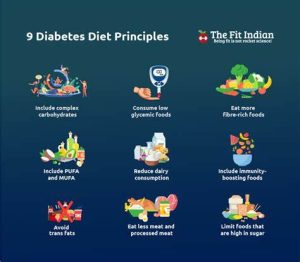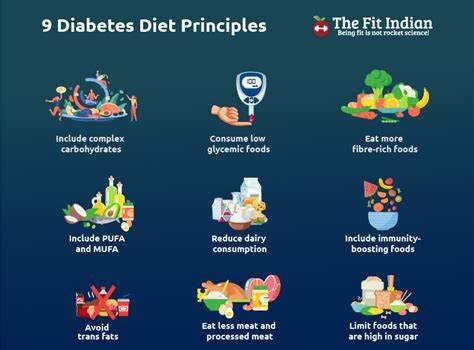
Introduction
Balancing sugar intake is a fundamental aspect of managing diabetes, but it doesn’t mean completely eliminating sweets from your life. It’s about finding equilibrium in your diet. In this article, we’ll explore practical tips on how to manage sugar consumption within the context of a well-rounded, healthy diet, ensuring better blood sugar control and overall well-being.
Sugar in a Diabetes Diet
Sugar is a carbohydrate, and it’s important to recognize that all carbohydrates affect blood sugar levels. That said, not all sugars are created equal. While it’s essential to limit added sugars, it’s equally important to consider the type of sugar and the overall context of your diet.
Balancing Act: Tips for Managing Sugar
- Be Mindful of Portions: Enjoying a small portion of your favorite treat is perfectly acceptable. It’s about moderation, not deprivation. Opt for a smaller serving size to satisfy your sweet tooth without causing significant blood sugar spikes.
- Choose Wisely: When selecting sugary foods, opt for those that offer some nutritional value. For example, dark chocolate with a higher cocoa content may have less added sugar and provide some antioxidants.
- Include Fiber: Fiber-rich foods like whole grains, vegetables, and fruits help stabilize blood sugar levels. Combining these with sugary treats can lessen their impact on blood sugar.
- Timing Matters: It can be beneficial to enjoy sweets as part of a meal rather than on an empty stomach. When paired with other foods, the sugar is absorbed more slowly, reducing blood sugar spikes.

https://www.thefitindian.com/blog/wp-content/uploads/2021/10/9-Diabetes-Diet-Principles.jpg - Read Labels: Pay attention to food labels and ingredient lists. Look for added sugars in processed foods, and be aware of the different names for added sugars, such as sucrose, high fructose corn syrup, and agave nectar.
- Stay Hydrated: Drinking water can help dilute the impact of sugar in your bloodstream and may reduce blood sugar spikes.
- Plan Ahead: If you anticipate consuming a sugary treat, consider adjusting your carbohydrate intake for the day. Reducing carbohydrates from other sources can help offset the impact of the treat.
- Monitor Blood Sugar: Regularly checking your blood sugar levels can provide insights into how different foods, including sugary ones, affect your body. This information is invaluable for making informed choices.
- Customize Your Approach: Diabetes management is highly individual. What works for one person may not work for another. Experiment and find a strategy that fits your preferences and needs.
A Well-Balanced Diabetes Diet
In addition to managing sugar, a well-rounded diabetes diet should include:
- Lean Proteins: Incorporate sources like poultry, fish, tofu, and legumes into your meals to help with satiety and stable blood sugar levels.
- Healthy Fats: Choose heart-healthy fats from sources like avocados, nuts, seeds, and olive oil to support overall health.
- Whole Grains: Opt for whole grains like brown rice, quinoa, and whole wheat bread to provide sustained energy and fiber.
- Fruits and Vegetables: These are rich in vitamins, minerals, and fiber, making them essential components of a diabetes-friendly diet.
Consult with a Dietitian
For personalized guidance on managing your sugar intake within a well-rounded diabetes diet, consult a registered dietitian with expertise in diabetes nutrition. They can provide tailored recommendations and meal plans that suit your individual needs and goals.

Conclusion
Balancing sugar within a diabetes-friendly diet is about moderation, not deprivation. By being mindful of portions, choosing wisely, and including fiber-rich foods, you can enjoy occasional treats while maintaining stable blood sugar levels. It’s all part of the sweet balance that is key to better diabetes management. Remember, your diabetes diet should be enjoyable and sustainable, allowing you to savor life’s little pleasures while prioritizing your health.










